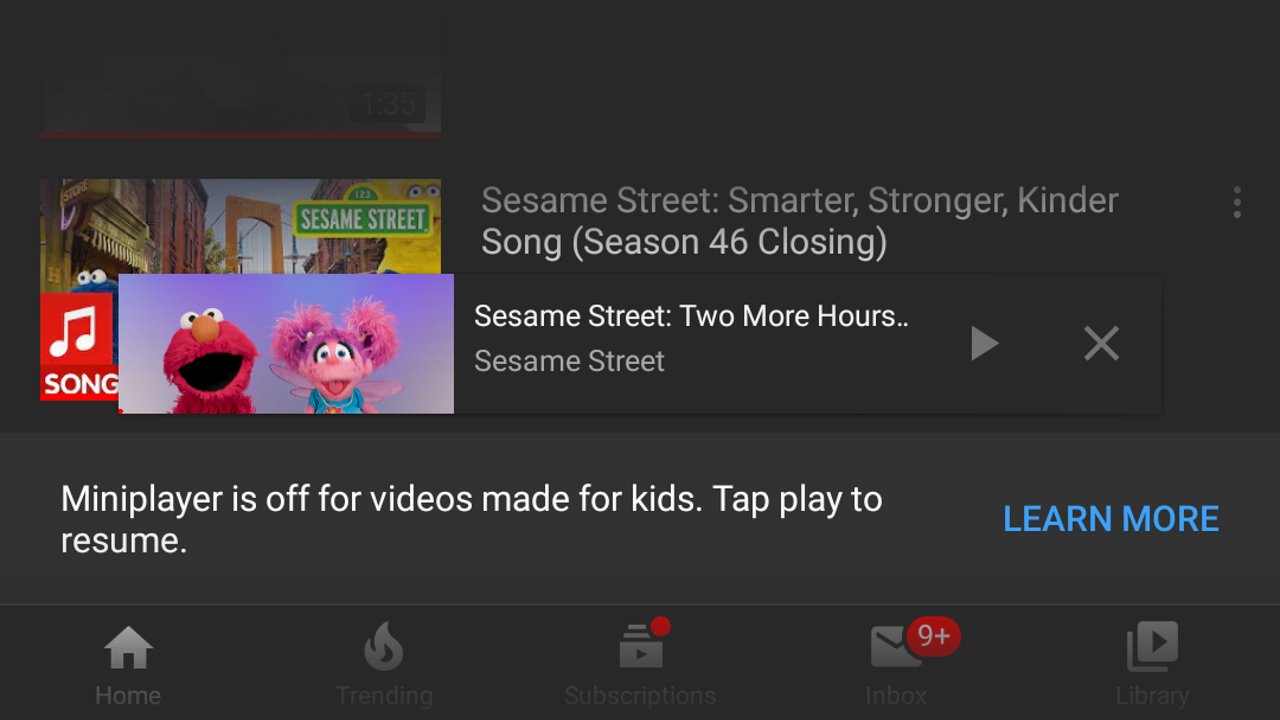It can take a fair bit of time for a series of major changes to a service everyone's seemingly familiar with to register with constituents. When YouTube announced its beefed-up compliance measures for the Children's Online Privacy Protection Act, independent content creators rang the first alarm bells, fearing their videos would be subject to restrictions on their creative voice and revenue. Now, viewers are beginning to complain about the loss of features on their end whether they're trying to keep their kids educated and entertained or if they happen to enjoy some nostalgic puppetry themselves. So, we're taking a comprehensive yet concise look at what's been going on and what might come next.
Congress enacted COPPA in 1998, but has been particularly relevant to YouTube in the past few years as concerns grew over the growing number of videos seemingly made for kids that actually contained no educational value or, even worse, inappropriate themes. The Federal Trade Commission and the New York Attorney General's office went after parent company Google over not doing enough to ensure safe watching for children and, just last year, ended up reaching a settlement which included a $170 million fine.
From January 6, YouTube began to implement major end user restrictions when they're watching videos or browsing channels that publishers have designated as for kids age 13 or under. The following features cannot be used:
- Autoplay on home
- Cards or end screens
- Channel branding watermark
- Channel Memberships
- Channel Posts
- Channel Stories
- Comments
- Donate button
- Likes and dislikes on YouTube Music
- Live chat or live chat donations
- Merchandise and ticketing
- Miniplayer playback
- Notification bell
- Personalized advertising
- Super Chat or Super Stickers
- Save to playlist and Save to watch later
Turning off all of these features is meant to encourage parents to actively browse and curate programming for their kids. For kids who are allowed to use YouTube on their own — no judgment calls in the comments on exasperated moms and dads giving their 3-year-old the iPad, please — it's meant to limit or prevent exposure to commercial interests that they might not have a full understanding of and, in a way, to stem mentally-erosive habits such as browsing for videos while one is already playing in the miniplayer. Inversely and most importantly, Google is prohibited from collecting and selling robust data from under-13s as it usually does on adult consumers based on what they do on YouTube. Supposedly, all of the features above contribute to that dataset.
These reasons don't seem to satisfy critics who are lamenting about the loss of the miniplayer, though. To be fair to them, Android Central makes decent arguments about how it makes no sense to degrade experiences on auxiliary services like YouTube Music. (Yep, the miniplayer gets screwed there, too.) Some of these cut features also take away the viewer's ability to easily and reliably stick with sources they trust — your Sesame Streets or Blue's Clueses, for example. The rules also fail to recognize that videos "made for kids" can appeal to both kids and adults alike and that adult viewers shouldn't have to be subject to a limited user experience.
Some content creators are up in arms about how YouTube is implementing these COPPA measures. While the FTC may be able to determine if a specific video is "made for kids" based on manual review as necessary, YouTube relies primarily on a mix of the publisher's self-reporting as well as viewer flags and artificial intelligence algorithms to figure that out. If a creator's published content is deemed to be in breach of the rules, their revenue may be cut. Appealing the decision will undoubtedly take valuable time as contact with human YouTube employees is notoriously touch-and-go. It may even drive them out of their business or career. This issue among others is generating a dilemma for YouTube as talent may emigrate to other well-established platforms dedicated to kids programming or, worse yet, drop out completely and take their audiences with them.
When the FTC initially announced its investigation into Google, YouTube reportedly considered siloing all kids content to its YouTube Kids app, a completely separate viewing experience from the main app and site with stricter content and publisher rules. That hasn't come to pass, so we're stuck with the situation YouTube has put itself in for the time being. In the future, though, if the FTC was to carve out different enforcement principles on content targeting a Mixed Audience (kids and adults as opposed to either group alone), we could probably see a way in which YouTube could allow users to specifically indicate whether they're watching videos with a child or children and to enable some of the kid-restricted features for adult-only users. That path is a speculative one, though, and whatever solutions might be proposed will have privacy questions tied to them in one way or another.
Plenty of ifs, ands, and buts for the sake of watching kid-friendly content in a miniplayer if you ask us, but as ever, it's more complicated than that.

